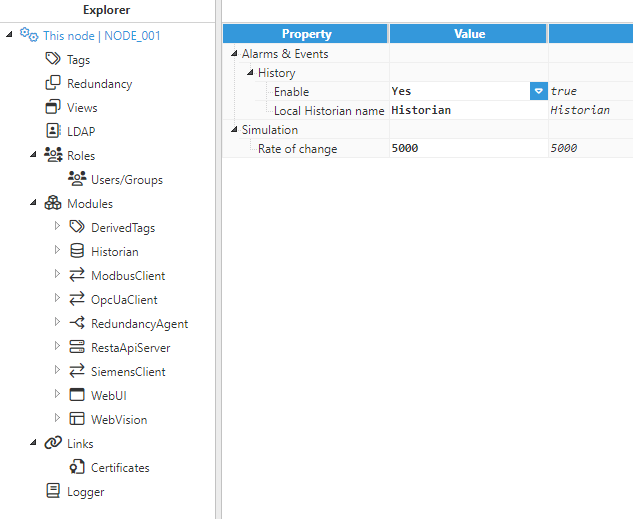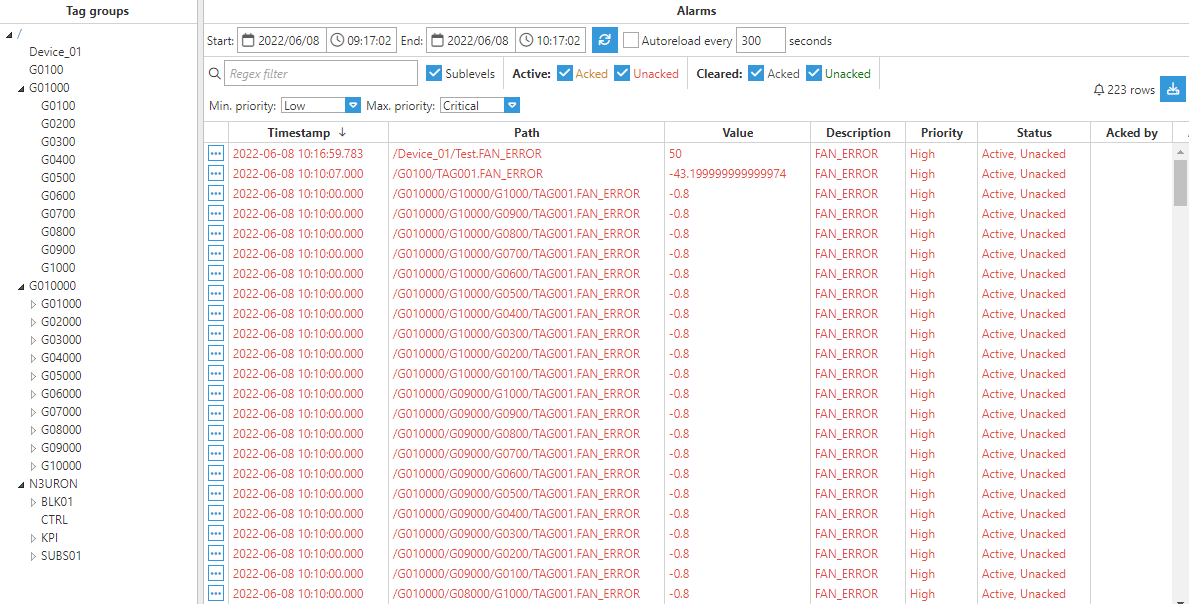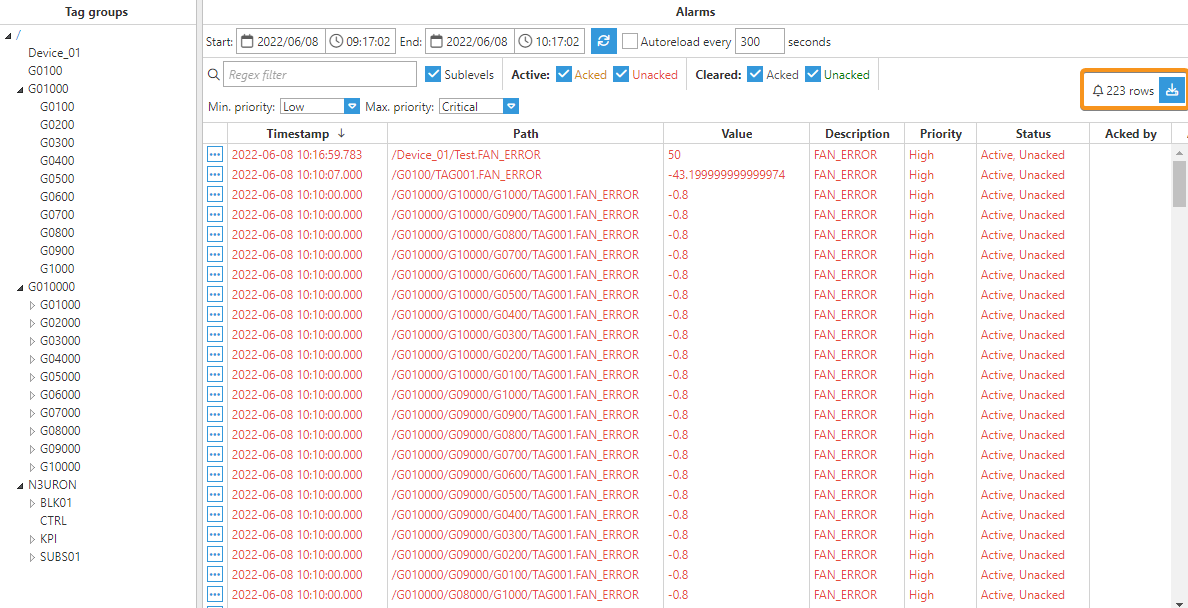Historical Alarms can be monitored from WebUI and Web Vision. WebUI provides a historical alarm table, which displays the alarm system history. To access the interface, go to Alarms-->Historical in the Navigation panel.
Before the historical alarm table can retrieve alarm data, a local Historian instance must first be configured. Once the Historian instance has been created, go to the Navigation panel and select Config under the System menu. Next, head to the Explorer panel and click on This node, as shown in the image below.
In order to store alarm data in a MongoDB database, users will need to enable Alarm & Events History and then enter the name of the Historian instance used for storing data in the Local Historian name field. Remember to hit the Save button.
 Figure 8. Historical Alarm & Events Configuration
Figure 8. Historical Alarm & Events Configuration
Tag Groups
On the left-hand side of the window we can find the Tag Groups browser, which is set up in an interactive tree structure that can be expanded or collapsed to view more tags. By selecting the different levels in the tree, we can filter which historical information will be displayed in the Alarms panel.
Alarms
The Alarms panel is located on the right-hand side and is the panel where the selected historical Alarm Events are displayed. Below the header we can find the Sublevels checkbox, which, if checked, will display all the alarms below the selected level in the Tag Groups tree. Users can also filter the alarms displayed in the panel by entering a Regular Expression in the corresponding text field. Most features of regular expressions are supported.
The historical alarm table can be configured to show active, unacknowledged, cleared, and acknowledged alarms. By default, all non-cleared/non-acknowledged alarms will be shown. It's also possible to filter alarms depending on their priority level, as shown in the image below.
Users can adjust the date range by modifying the Start and End date and time fields provided for this alarm. All Alarm Events with timestamps that match the selected range will appear in the table.
Users can also enable auto-reload for this table using the corresponding check box and the numeric field that specifies how often the historical data reload will occur.
 Figure 9. Historical Alarms Table
Figure 9. Historical Alarms Table
The columns shown in the Alarms panel are as follows:
- Timestamp: The timestamp corresponding to the alarm event.
- Path: Full path of the tag linked to the alarm.
- Value: The tag value.
- Description: Provides a description of the alarm.
- Priority: Priority level for the alarm.
- Status: Combination of the alarm's Active and Acknowledged conditions.
- Acked by: User that acknowledged the alarm.
- Ack comment: Message entered when the alarm was acknowledged, if any.
Finally, N3uron allows users to export everything that is being displayed in the Alarms panel to a CSV file by clicking on the button located in the upper-right corner of the panel. Next to this button, there is also an alarm counter, which shows the total number of displayed Alarm Events.
 Figure 10. Exporting Historical Alarms
Figure 10. Exporting Historical Alarms
Historical Alarms via Links
It is possible to read historical alarms from other nodes through the links. To do this, go to Node, select the Link and the historical alarms corresponding to the selected node will automatically appear.
.png)
.png)
.png)